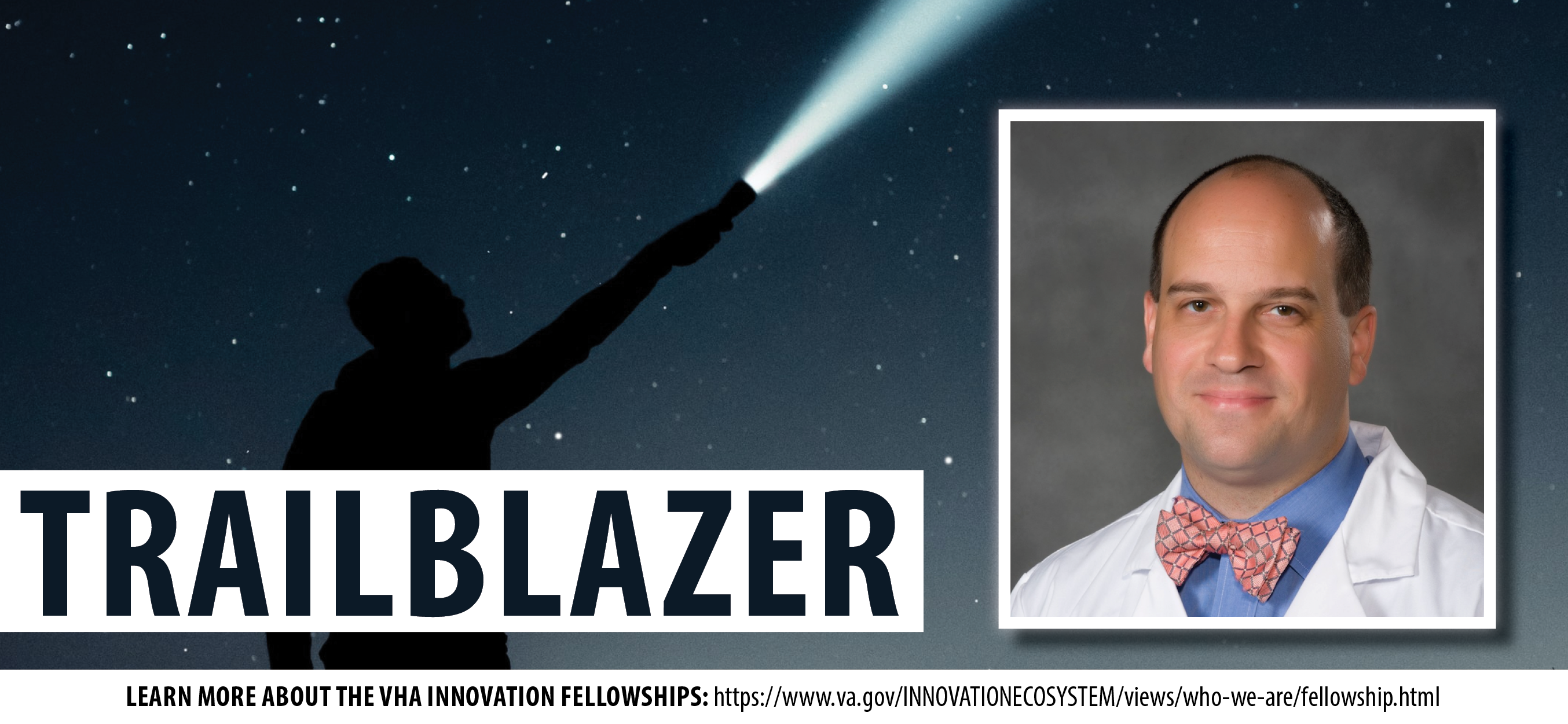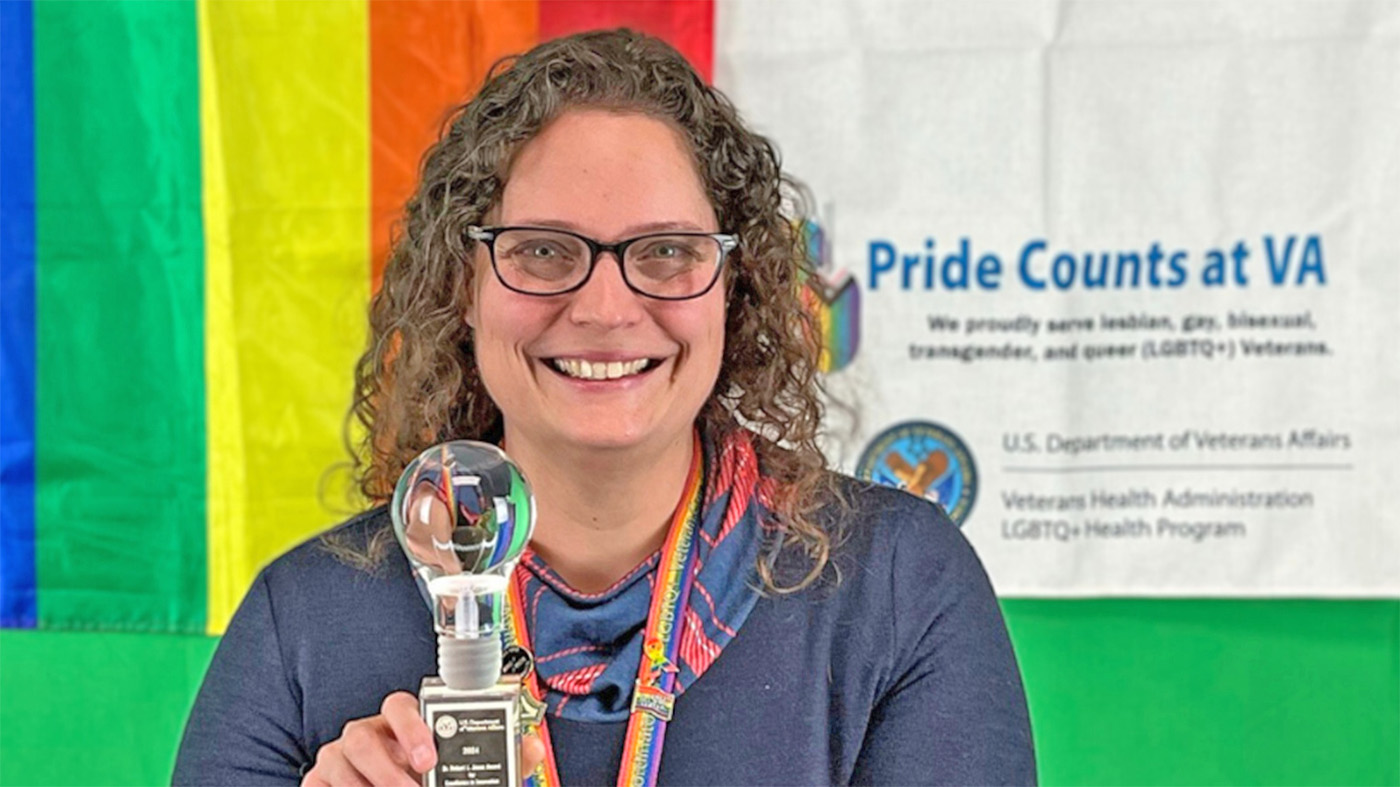Dr. Michael Amendola, one of VHA Innovation Ecosystem’s (VHA IE’s) six 2021 Innovation Fellows, took an unexpected professional turn when he embarked on the innovative path of utilizing 3D-printing technology.
Dr. Amendola worked for the last 10 years as a general and vascular surgeon at the Central Virginia VA Health Care System, with little knowledge of 3D printing until he discovered the revolutionary applications taking place throughout VA with the technology. Now, Dr. Amendola has spent the last three years working on large-scale 3D-printing projects leading him to become a VHA IE Senior Innovation Fellow and developing the 3D Printing Clinical Champion Capability program.
“I never thought in the beginning of my career I’d be doing 3D printing. Meeting with a previous fellow, Beth Ripely, changed my path through her innovation power,” noted Dr. Amendola.
With his program, Dr. Amendola is building out VA’s 3D-printing community and eliminating silos within VA, enabling people to engage with this incredible technology through education and interfacility consulting. Raising educational efforts toward 3D printing creates a culture that understands the technology and how to apply it appropriately to Veteran care. Dr. Amendola’s efforts get necessary stakeholders on board involved and collaborating with 3D-printing engineers, clinical stakeholders, and the Agile Design and Production Transformation (ADAPT) team to develop 3D-printing curriculum and quality assurance processes.
The 3D Printing Clinical Champion Capability infuses knowledge and tools throughout the clinical enterprise across multiple providers, allowing the VHA community to use 3D printing to care for each Veteran’s specific needs. The data backs this up. For example, emerging literature indicates that printed 3D modeling for surgeons results in less surgical complications, less bleeding, and less time in the operating room for a variety of different surgical specialties.
“VA leads the way with this technology, and we are just beginning to scratch the surface with it,” said Dr. Amendola. “The Real power of VA is the clinical enterprise and imbedding this technology in our hospitals so it can get closer to patients and Doctors.”
3D printing’s capabilities are dynamic and vast, ranging from pharmaceutical to surgical and COVID response uses. Rapidly personalizing medicine, 3D printing has the power to change how care is delivered not just at VA but throughout the country. The technology was used during the pandemic in the rapid design and manufacturing of 3D-printed personal protective equipment (PPE), and thanks to Dr. Amendola’s efforts it can now be used by even more innovative VA employees.
VA’s efforts don’t stop there, however. “Our biggest hope for the future is bioprinting, the ability to print using a patient’s cells into a new kidney, arteries, bones,” said Dr. Amendola. “I think it’s going to change how we think about fixing people.”
Thanks to support from the VHA IE’s Innovation Fellowship Program, Dr. Amendola is set to bring that future into a reality. The Senior Innovation Fellowship allows him to build his program into a national-scale project that leverages internal and external stakeholders throughout the organization, government, academia and industry to build a stronger health care system for Veterans.
To learn more about how VHA IE helps innovators like Dr. Michael Amendola to improve Veteran health care, head to the VHA IE website.
Topics in this story
More Stories
Bob Jesse Award celebrates the achievements of a VA employee and a team or department that exemplifies innovative practices within VA.
The Medical Foster Home program offers Veterans an alternative to nursing homes.
Watch the Under Secretary for Health and a panel of experts discuss VA Health Connect tele-emergency care.







